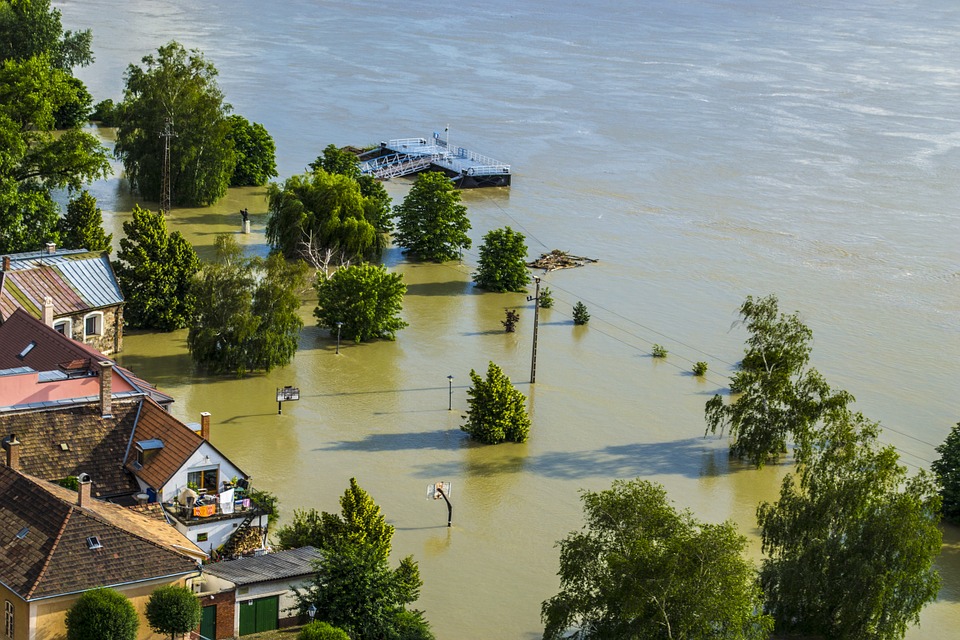We never know what challenges and havocs the nature would put in front of human due to continuous interference of human’s activities with ecology. Similar havoc has happened in Kerala in form of disastrous flood.
Flood is directly or indirectly related with an increased risk of water borne health problems due to contamination of water during flood. During flood every type of particle in form of organic or inorganic present over earth surface over a particular area gets mixed with water which leads to high chances of health hazards. In Kerala’s flood, unfortunately, many animals have died which becomes a very strong reason of concern. These died animals decompose; bacteria growing in dead body may be released outside leading to exposure of humans to diseases causing pathogens. Rats may carry many diseases’ pathogens of concern including salmonella, E. coli. There is tremendous risk of spread of zoonosis in Kerala’s flood condition. Among zoonosis important ones are anthrax, plague, brucellosis, bovine tuberculosis, leptospirosis, salmonellosis, spotted fever, several common infections, etc.
Waterborne diseases which are mainly caused after flood
- Diarrheal disease: Diarrheal disease outbreaks can arise subsequent to drinking-water contamination, and have been reported after flooding and related movement. Vibrio cholera (O1 Ogawa and O1 Inaba) and enterotoxigenic Escherichia coli are the major causes of this type.
- Hepatitis A and E: Hepatitis A and E have also fecal-oral transmission, especially in poor water sanitation.
- Leptospirosis: Leptospirosis is a bacterial zoonosis transmitted through contact of mucous membranes and skin with water, moist vegetation, or dirt contaminated with rodent urine.
- Diseases associated with crowding: Acute respiratory infections as the main cause of morbidity and mortality among unsettled people are seen predominantly in children less than 5 years old.2 Furthermore, meningitis and measles are transmitted from person to person, especially in crowded circumstances.
- Vector-borne diseases: Malaria, cutaneous leishmaniasis and rabies are transmitted by vectors
- Infections due to wounds and injuries: The potentially significant threats to persons suffering a wound are tetanus, staphylococci and streptococci.
Management for prevention and control of zoonotic diseases
Before flood
- Flood prone areas should be marked carefully, there must not be any encroachment of land coming in the zone of flood, no land filling or dumping should be made in the passageways of water bodies which are sensitive.
- Furthermore, there must be always active disaster policy making and implementing body.
- Regular surveys should be made and advanced plan to combat such adverse conditions should be made.
- Facilities of proper vaccinations against communicable diseases for both human and livestock should be made.
- Pre stored feed materials like silages, hay and complete feed block should be there to be present when needed.
During flood
- Prompt rescue of animal should be made by experienced person but no human life should be put to danger.
- Animal should be put under dry and safe shelter after being rescued.
- Provision of safe and clean water by addition of chlorine, bleaching powder 23 kg/ 1, 00,000 gallon water or 4kg potassium permanganate / 1, 00,000 gallon water should be made available to animals but, water must be allowed for at least 20 hrs to settle before it is used.
- Generally, feed about 8% of body weight with 65-70% TDN will supply sufficient nutrients.
- Access to primary health care facilities should be made available to the suffering and rescued animals.
- Early diagnosis and treatment should be done; it prevents excess mortality and morbidity.
- Secondary and tertiary treatment, if needed, should be given.
- Standard operating procedures should be followed.
- Provision of basic laboratory facility will give additional benefit.
After flood
- It includes urgent medical care to suffering animals, water, food and shelter should be made available.
- Appropriate and prompt medical supplies and vector control methods should be followed.
- Apt disposal methods like incineration, burial, or composting whichever method is applicable should be used for maintenance of better sanitary conditions post flood.
Kerala has been struck with adverse flood conditions in which many innocent animals have died and many are still suffering. There is always high risk of spread of many zoonotic diseases which may cause inevitable loss to health and economy of state and as whole to the nation but, with better management and prevention its effect can be minimized.
